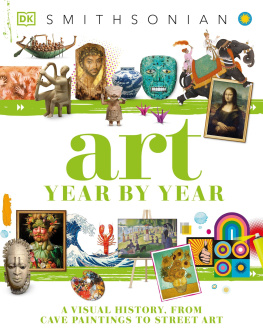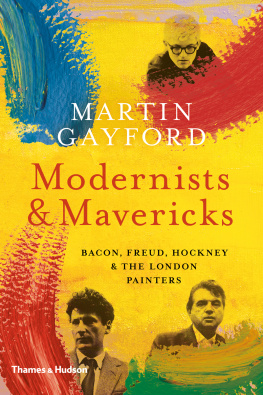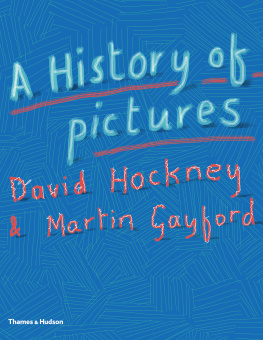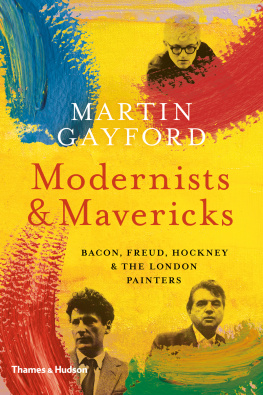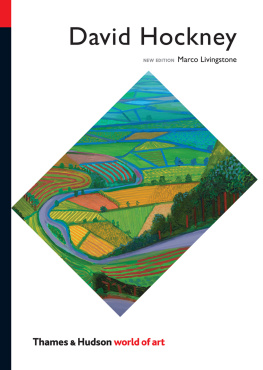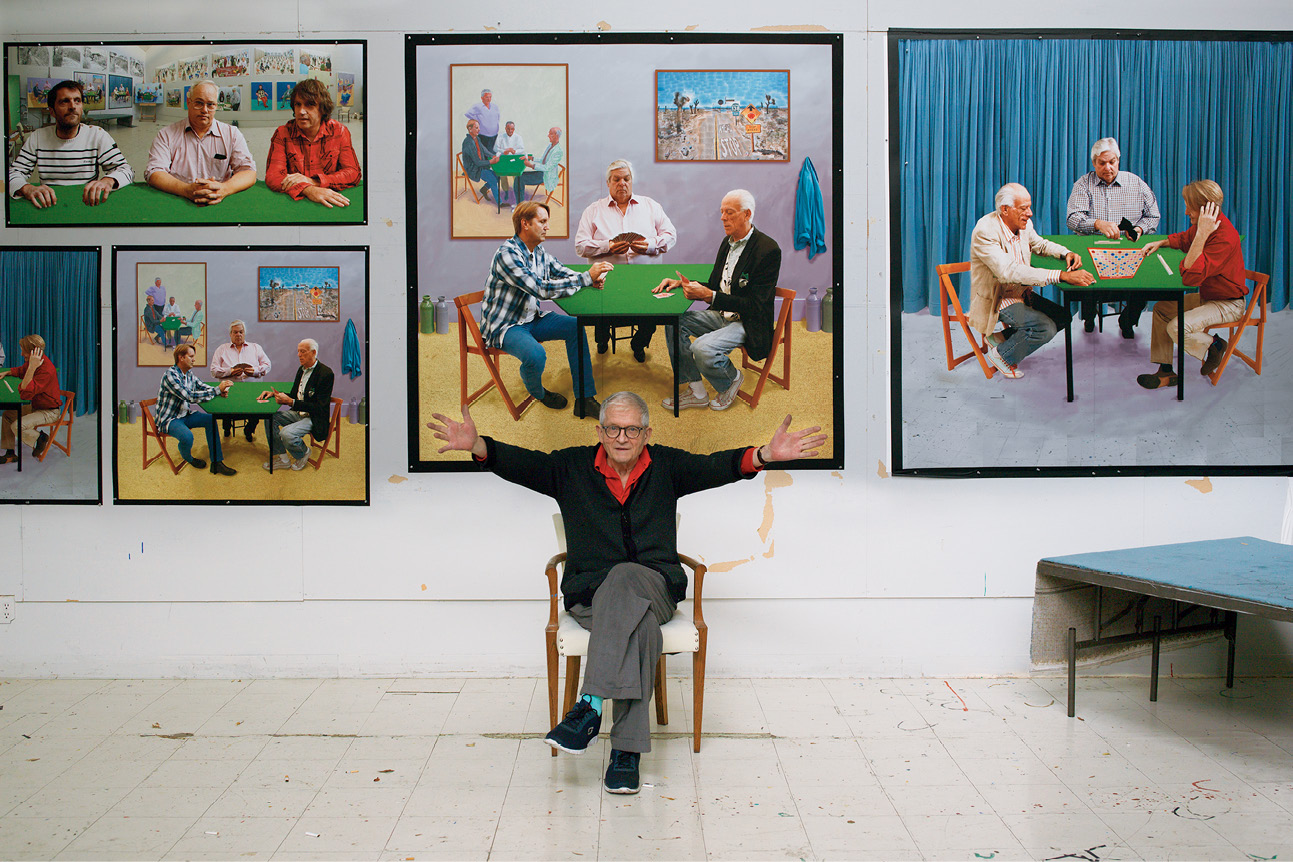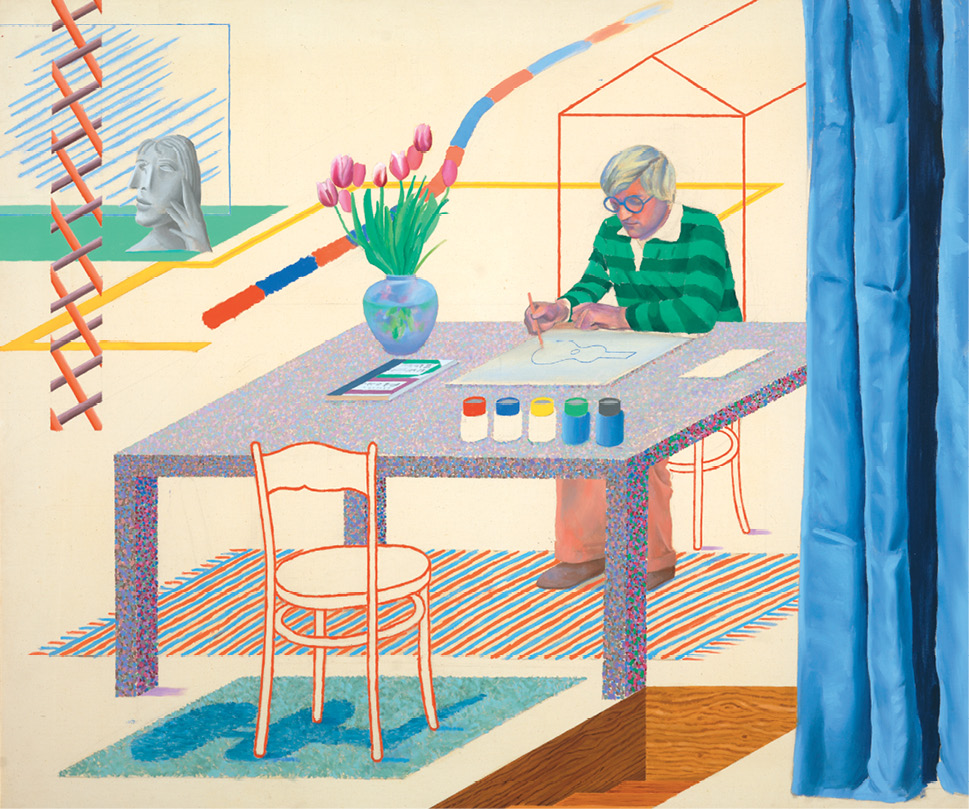
DAVID HOCKNEY
Self-Portrait with Blue Guitar, 1977
Oil on canvas
Pictures are all around us: on laptops, phones, in magazines, newspapers, books such as this and even still hanging on walls. It is through pictures just as much as words that we think, dream and try to comprehend the people and environment around us.
Until now, however, pictures have seldom been considered as a single category in themselves. There are plenty of histories of different types of picture, such as painting, photography or film. But not of pictures as a whole by which we mean representations of the three-dimensional world on flat surfaces such as canvas, paper, cinema screens and smartphones. The continuities and interactions between those differing varieties of depiction are the subject of this book.
Secret Knowledge (2001) pointed to one of the most important. It proposed that European painters had been familiar with images projected by lenses and mirrors the kind we associate with photography for centuries before the official birth date of photography, 1839. A History of Pictures develops that argument, supports it with fresh evidence and puts it in a wider context. This is a global story but it concentrates on the two traditions that have aimed to capture the world around us extending in time and space in two dimensions: the occidental one of Egypt, Europe and the USA, and the quite different approach of China and Japan. It is a narrative that originates in prehistoric caves and is still unfolding.
David Hockney and Martin Gayford
Any picture is an account of looking at something.
DH - I once saw a wonderful painting of an owl by Picasso. Today, I suppose, an artist might just stuff the bird and put it in a case: taxidermy. But Picassos owl is an account of a human being looking at an owl, which is a lot more interesting than a preserved specimen.
Any picture is an account of looking at something. Pictures are very, very old. They may be older than language. The first person to draw a little animal was watched by someone else, and when that other person saw that creature again, he would have seen it a bit more clearly. Thats true of the bull painted in a cave in southwestern France 17,000 years ago. The image was that artists testimony, made on a surface, of seeing this creature, not the thing itself. Thats all a picture can be.
Every picture ever made has rules, even the ones made by a surveillance camera in a car park. Theres a limit to what it can see. Someone has put it there, arranged that it would cover a certain area. There is nothing automatic about it: someone had to choose its point of view.
MG - In other words, every picture good or bad, and even if it does not seem so presents a personal angle on reality. Thats true of this book. Its an individual view of the history of pictures from the standpoint of its two authors: one a painter, the other a critic and biographer of artists. Our aim is to tell the story, and explain the evolution, of picture-making through the eyes of someone who makes pictures and a writer fascinated by how they are made. It is a book that grew out of conversations, so it contains two voices, each adding to the discussion. The subject is looked at through two pairs of eyes; and inevitably each gaze is from a particular vantage point. We hope in this way to write something new: an account of how people have made visual representations of the world around them for thousands of years and how those are seen by us, right now.
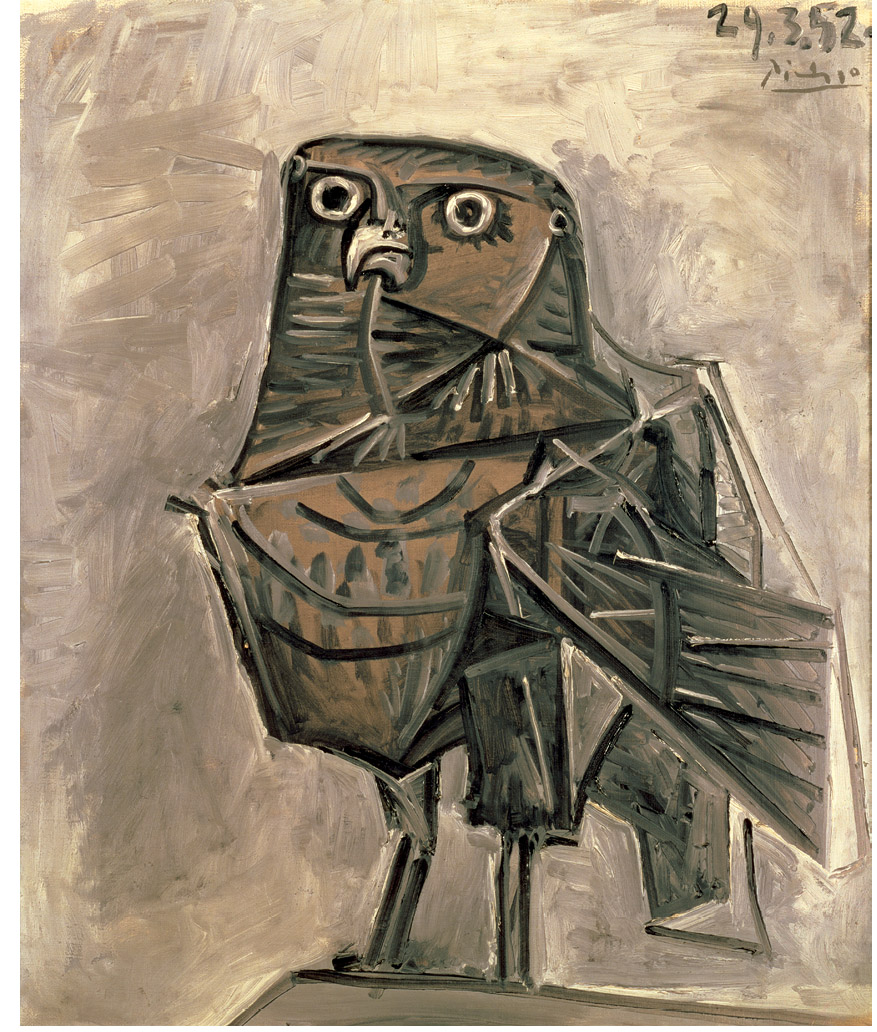
PABLO PICASSO
The Owl, 1952
Oil on canvas
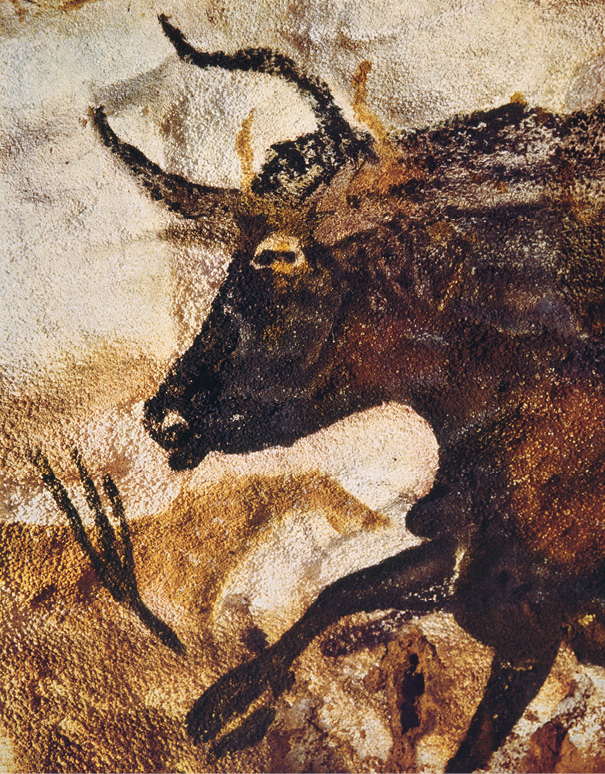
Bull, Lascaux cave, France,
c. 15,000 BCE
When pictures are discussed they are usually divided into categories based on the methods by which they were made: painting, drawing, mosaic, photograph, film, animation, cartoon, comic strip, collage, computer game. Alternatively, pictures are classified by style and period, such as baroque, classical or modernist. Some of these are regarded as art, and some are not.
DH - What makes a work of art? I dont know. There are lots of people who tell you they are making art. Maybe some of them are, but Im not sure thats true for all of them. Perhaps Im old fashioned, but thats not a phrase I would use. Id prefer to say Im making pictures depictions. Weve had a great many histories of art, what we need now is a history of pictures.
MG - The history of pictures overlaps with the history of art, but it is not the same. Art contains much that does not count as a depiction: decoration and abstraction, for example, but also excludes other types of image.
DH - Photography and film are a big part of the history of pictures, but nonetheless I question photography. A lot of people dont, they accept the world looks like a photograph. I think it nearly does, but it doesnt entirely. I think its actually a lot more exciting than that. Whats more, we dont have to view the world in the way a lens does; two human eyes and brain do not naturally see in that way. That is the reason why I have made some of my own works with cameras, and why I wrote the book Secret Knowledge sixteen years ago. My original title for that was Lost Knowledge. I think knowledge can be lost, and found again.
MG - In Secret Knowledge it was claimed that the spirit of photography was far older than 1839. The argument was that European artists were looking at, and using, images projected by lenses and mirrors for centuries before a practical method of fixing the image came into use. In this book, we contend that this was part of a deep interconnection through time.



